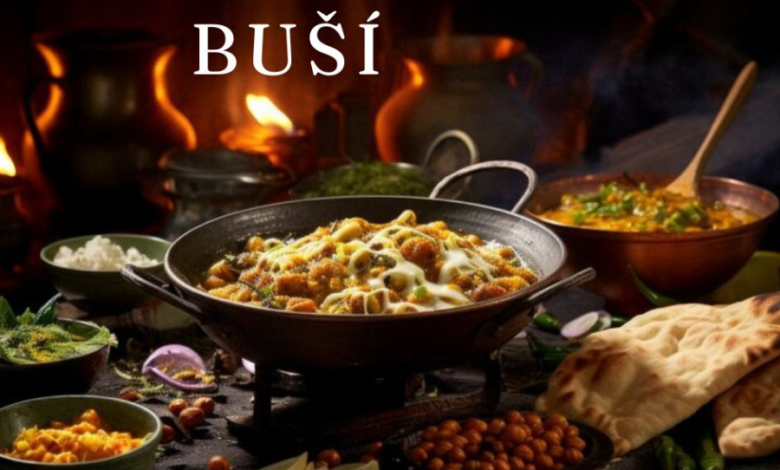Buší Unveiled: Health Benefits, Sustainability, and Modern Variations

The Timeless Appeal of Buší: A Culinary and Cultural Journey
Buší, a cherished dish with deep cultural roots, offers a flavorful glimpse into Eastern European culinary history. This article explores the rich heritage, evolving recipes, and the meal’s commitment to sustainability, shedding light on why Buší remains a beloved tradition.
Origins and Cultural Significance
Buší’s history is intertwined with the simple, hearty meals prepared in the rural kitchens of Eastern Europe. Originating centuries ago, this dish was crafted to endure harsh winters and celebrate bountiful harvests. Beyond being just a meal, Buší symbolized resilience and creativity, crafted from basic ingredients and reflecting the seasonal changes and local customs.
This dish has transcended time, serving as a comforting link to our past, connecting generations through shared meals. It represents family bonds, communal celebrations, and a taste of history with every bite.
Evolution in Culinary Tradition
Though Buší has ancient roots, it has evolved over the years. Modern interpretations of this traditional dish incorporate new techniques and ingredients while staying true to its essence. Regional variations of Buší highlight local culinary traditions and indigenous ingredients, whether prepared in a rustic countryside kitchen or a contemporary urban setting.
In rural areas, Buší is celebrated for its authenticity and freshness, using locally-sourced ingredients. Meanwhile, urban chefs experiment with fusion flavors, blending Buší with global influences to create innovative dishes. Despite these changes, the heart of Buší—its rich flavors, comforting textures, and cultural significance—remains unchanged.
Global Appeal and Culinary Tourism
Buší has garnered a dedicated following worldwide, appealing to food enthusiasts with its unique flavor profile and adaptability. Its growing fame has turned its places of origin into popular culinary destinations. Food lovers can embark on culinary tours and gourmet experiences focused on Buší, savoring the authentic tastes of Eastern Europe and delving into its extensive culinary heritage.
The Buší Plant
Buší also refers to Busius maximum, a perennial herbaceous plant native to South America. With its aromatic flowers and lush foliage, this plant thrives in tropical climates. Initially revered for its medicinal properties and used in cultural rituals, Buší has traveled across cultures and now plays a role in Eastern European cuisine.
The journey of Buší from its origins in South America to Eastern European kitchens highlights its versatility and enduring popularity. It stands as a testament to the diverse range of plants that enrich our culinary traditions.
Health Benefits and Environmental Impact
Buší is known for its nutritional value and positive environmental impact. Rich in antioxidants and essential minerals, it supports immune function, digestion, and overall energy levels. Its anti-inflammatory properties make it a popular choice for natural remedies.
Additionally, Buší’s sustainability is notable. As a renewable resource, it reduces dependence on synthetic products and minimizes carbon emissions. Its cultivation supports eco-friendly practices and contributes to environmental preservation.
Versatility and Integration
Buší’s versatility extends beyond the kitchen. Its fragrant leaves and blossoms can enhance various dishes, from soups and salads to stir-fries. The plant’s extract is valued in skincare for its moisturizing and anti-aging benefits, making it a popular ingredient in beauty products.
Medicinal and Therapeutic Potential
Historically, Buší has been valued for its therapeutic properties. Ancient civilizations used it to treat a range of ailments, from fevers to digestive issues. Modern research continues to explore its potential medicinal benefits, including possible anti-cancer effects and support for cardiovascular health and diabetes management.
Cultivation and Sustainability
Buší is relatively easy to cultivate, thriving in well-drained soil and warm, humid conditions. It requires consistent water and sunlight and can be propagated from seeds or cuttings. Sustainable harvesting practices are essential to preserve Buší’s natural habitat and ensure its availability for future generations.
The plant’s renewability and biodegradability make it a sustainable alternative to synthetic materials. Sustainable harvesting involves adhering to local regulations, reducing waste, and supporting fair trade initiatives.
Future Prospects
The future of Buší looks promising as interest in eco-friendly and sustainable living grows. Innovations in Buší cultivation and processing are opening up new possibilities, from eco-friendly packaging to sustainable textiles. Advances in vertical farming and biotechnology are enhancing Buší’s yield and accessibility, paving the way for a more sustainable future.
FAQs:
1. What is Buší?
Buší is a traditional Eastern European dish with a rich history and cultural significance. It consists of simple, hearty ingredients that have been adapted over the years to reflect seasonal changes and local customs.
2. Where does Buší originate from?
Buší originates from Eastern Europe, where it was traditionally prepared in rural kitchens. It has a long history that dates back centuries, symbolizing resilience and communal celebrations.
3. How has Buší evolved over time?
Buší has evolved from its traditional roots to incorporate new cooking methods and ingredients. Modern variations of Buší can include fusion flavors and adaptations that cater to diverse tastes, while still maintaining its core essence.
4. What are the health benefits of Buší?
Buší is rich in antioxidants and essential minerals, which support immune function, digestion, and overall energy levels. It also has anti-inflammatory properties that may help with various health conditions.
5. How does Buší contribute to environmental sustainability?
Buší is a renewable resource that reduces reliance on synthetic materials and helps lower carbon emissions. Its cultivation supports eco-friendly practices and contributes to environmental preservation.
6. Can Buší be used in skincare products?
Yes, Buší extract is valued in skincare for its moisturizing and anti-aging benefits. It is commonly found in beauty products like moisturizers and face masks.
7. How is Buší cultivated?
Buší is easy to grow in warm, humid conditions with well-drained soil. It can be propagated from seeds or cuttings and requires consistent water and sunlight. Sustainable harvesting practices are important for preserving its natural habitat.
8. What are some modern takes on Buší?
Modern variations of Buší include fusion recipes that combine traditional flavors with global influences. Chefs in both rural and urban settings create unique versions of Buší, showcasing its adaptability.
9. What role does Buší play in culinary tourism?
Buší has become a culinary icon, attracting food enthusiasts and tourists to its regions of origin. Culinary tours and gourmet experiences centered around Buší offer a taste of Eastern European cuisine and its rich history.
10. What are the future prospects for Buší?
The future of Buší looks promising as innovations in cultivation and processing continue to develop. It is being explored for sustainable applications, including eco-friendly packaging and textiles, contributing to a more sustainable future.
Conclusion
Buší, with its deep-rooted history and evolving culinary significance, offers a unique glimpse into Eastern European traditions and modern culinary innovations. This cherished dish, which began in the heartlands of rural Eastern Europe, has journeyed across cultures and time, embodying resilience, adaptability, and sustainability.
As Buší continues to inspire new generations of chefs and food enthusiasts, its blend of tradition and innovation ensures that it remains a beloved symbol of cultural heritage and environmental consciousness. Whether enjoyed in its traditional form or as part of contemporary fusion cuisine, Buší stands as a testament to the enduring appeal of authentic, flavorful food.




